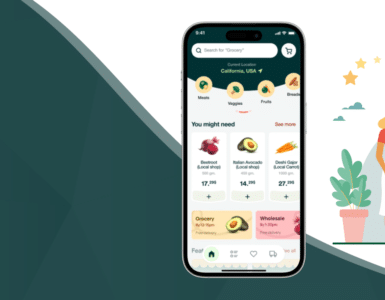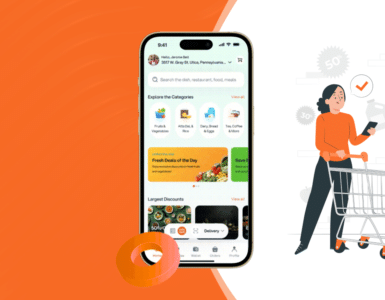The 21st century is synonymous with stress and anxiety, fueled by the hectic lifestyle and overuse of social media apps. Add to that the lingering effects of the COVID-19 pandemic, and you have a mental health crisis that continues to impact millions globally.
With each passing day, stress levels are steadily increasing, prompting a significant shift towards mindfulness, wellness, and mental fitness. As a result, people are embracing workouts, yoga, physical activities, and most notably, meditation apps.
For example, the Calm app—valued at $189.64 million in 2018—has seen remarkable growth, projected to grow at a CAGR of 41% annually. In fact, in 2019 alone, the top 10 meditation apps generated $195 million, a 52% increase from 2018, as per Sensor Tower.
If you’re considering launching a meditation app like Calm or Headspace, now is the perfect time. Let’s walk you through the key steps and strategies to build a successful app that enhances mental well-being and attracts a loyal user base.
1. Define Your Meditation App Idea Clearly
Before you write a single line of code, you need to have a well-articulated app concept. A clearly defined idea allows you to:
-
Visualize the user experience
-
Communicate effectively with your development team
-
Set the stage for feature planning and UI/UX design
There are several types of meditation apps, including:
-
Meditation music apps
-
Mental health tracker apps
-
Breathwork & breathing exercise apps
-
Guided meditation platforms
-
Sleep-focused wellness apps
Decide whether you want to mimic an existing model or bring a unique twist to the market.
If you believe your concept is truly unique, consider protecting it legally—here’s a detailed guide on How to Patent a New Mobile App Idea? – Complete Guide
2. Use the MVP (Minimum Viable Product) Model
A Minimum Viable Product (MVP) helps you validate your idea, save costs, and understand user behavior before scaling.
Start by offering only core features to attract early adopters. Based on feedback, you can then introduce advanced tools.
Key MVP Features:
-
Sign-up/Sign-in options (Email, social media, biometric login)
-
Introductory video or animation explaining app benefits
-
User profiles with tracking and progress analytics
-
Gamification elements to improve engagement
-
Limited access to pre-recorded sessions
3. Choose the Right Platform (iOS or Android)
While launching for both iOS and Android is ideal, it can be expensive. If your budget is tight, start with the platform that best reaches your target audience.
As of 2025, Android holds over 70% of the global mobile OS market share (StatCounter). Thus, starting with Android can help you reach a broader user base.
Later, once your app gains traction, consider expanding to iOS and even web platforms for cross-device access.

4. Prioritize UI/UX Design
An effective meditation app UI/UX should evoke calmness, clarity, and ease of use. The design must cater to users suffering from anxiety, so every detail counts.
Best Practices for UI/UX:
-
Avoid cluttered layouts and overloaded patterns
-
Use soothing colors like pastels, earth tones, or neutral palettes
-
Incorporate subtle animations and breath-paced visuals
-
Ensure intuitive navigation and session accessibility
Your meditation app should not resemble a fitness tracker or music app; it needs its own identity focused on mental wellness.
5. Integrate AR/VR Technology for Immersive Experiences
Augmented Reality (AR) and Virtual Reality (VR) have become game-changers in the mental health industry.
With AR/VR, users can immerse themselves in calming environments—from peaceful beaches to tranquil forests—without leaving their rooms. This significantly amplifies relaxation and reduces anxiety.
To implement AR/VR effectively:
-
Use 360° guided meditation sessions
-
Add VR-compatible features for platforms like Oculus
-
Combine AR/VR with sensor-based breathing feedback
For real-world examples, check out TRIPP, a VR meditation app praised for its innovation in immersive mindfulness.
6. Scalable App Architecture
Meditation apps typically include a growing library of content, from audio tracks to videos and live events. To manage future growth, you’ll need scalable architecture.
The best solution? Use cloud-based mobile backend services such as:
-
Firebase
-
AWS Amplify
-
Google Cloud
These services enable you to store large files, handle increased user load, and ensure real-time data syncing without performance drops.
7. Live Streaming for Real-Time Connection
With the rise of virtual wellness communities, integrating live streaming enhances user engagement and retention.
Live features to consider:
-
Live meditation or yoga sessions
-
Expert Q&A webinars
-
Community sharing rooms
These not only build trust and value, but also position your app as a thought leader in the mindfulness space.
8. Monetization Strategies
The right business model ensures you generate revenue while offering real value.
Proven Monetization Options:
-
Subscription Model
Offer a 7–14-day free trial followed by monthly or annual subscription plans (freemium model). -
In-App Purchases
Sell premium sessions, exclusive content, or offline access via microtransactions. -
Pay Per Download
Charge users upfront, though this model is less popular in today’s app economy. -
Advertisements
Run native ads or sponsored content only if you have a large active user base.
Final Thoughts
In today’s fast-paced world, mental health apps offer a beacon of relief. If you’re serious about building an app like Calm or Headspace, these steps will set a solid foundation for development, scaling, and success.
From ideation to monetization, each phase demands careful planning, technical expertise, and a user-first approach.
Before hiring a mobile app development company, ensure you:
-
Define your niche and features
-
Validate the idea through MVP
-
Leverage the latest tech like AR/VR
-
Prioritize mental health-specific UI/UX
-
Monetize smartly and ethically
Need help? Explore our custom Meditation App Development Services to turn your idea into reality.
























